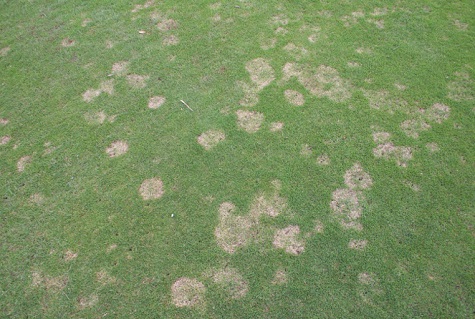
In the first of this series of articles, we sought to get a clearer definition of what sustainability is and what it means to an organisation, especially in the amenity horticulture sector. Sustainability comprises three pillars or components namely economic viability, environmental protection and social equity. The definition of these is important when any organisation seeks to become more sustainable, or indeed seeks to deliver more sustainable products and services to its customers. The remaining articles on this subject will now look more closely at various sub sectors of, and activities in amenity, and those providing services to them which hopefully will help all readers in their own search for sustainability. Previously we considered Sustainability In Practice, followed by Sustainability At The Sharp End.
This month we give a particular focus on those who supply essential inputs to our sector such as fertiliser and plant protection products.
The amenity sector is a diverse but essential one. Never was the work of all who operate in amenity, in all its facets, highlighted more than during COVID restrictions, keeping transport networks running, ensuring safe and healthy areas for people in parks and communal areas and more. A vital element in the delivery of amenity services is the supply sector; those we rely upon for essential inputs such as seeds, fertilisers, and indeed much more. This article explores how those who provide some of these essential elements for establishing and maintaining sports and amenity surfaces are responding to the sustainable agenda, both within their own organisations and for their customers.
Speaking to a number of key individuals in the supply sector emphasises that they certainly are taking actions and sustainable practice is becoming embedded within all their strategies and plans. As one put it ‘we do not see sustainability as a buzz word but vital in our operations. Being sustainable is best practice, at the heart of all we do’. All the major organisations seek to align themselves with UN sustainability goals with time set targets, including those for reducing greenhouse emissions and increasing the use of sustainable energy sources. They have implemented, across all their activities, carbon plans and seek to innovate and communicate to help their customers continue to deliver products and services fit for purpose but in as sustainable a way as possible.
So how is this being done? In the following sections I refer to a number of the key areas arising from discussions with such suppliers, identified as being of real benefit to both organisation and customer.
Plastic reduction: All spoken to are incredibly aware of the need to reduce plastic use and particularly single-use plastic. The aim is to keep plastic use to a minimum and to introduce recyclable options wherever possible
Waste management: This covers a wide area, from the re-cycling of packaging materials to working with customers to ensure optimal use of product supplied and minimising waste. Major strides are being taken to increase fertiliser efficiency and there is much interest in the new innovations such as the production of green ammonia, produced in the most sustainable manner. Whilst innovations such as this may often be at an early stage, they offer real opportunity. Also in terms of fertilisers, work is advancing in the production of more biodegradable product with slow release, to improve efficiency and effectiveness in its use. Waste management also includes optimising energy use in terms of heating and light across organisations’ premises in all the various ways available.
Transport: Optimising delivery options is very clearly a key factor. It makes economic sense; key to an organisation’s sustainability, as well as having environmental and carbon benefits. One major supplier to both amenity and agriculture, report that at least 30% of their car fleet is now non fossil driven and 80% of their truck fleet use fuel based upon vegetable oils.

Water use & conservation: Whilst the subject of food supply is often mentioned, water supply can often be less prominent. Yet, as emphasised in a recent UN report, globally, and certainly in the UK, it is a major challenge as populations and demands continue to grow substantially. Discussions with a leading nursery supplying plants and goods to amenity emphasise just how important they see this. In recent times, they have constructed new reservoirs to serve their needs and irrigation is carefully managed by trained staff and modern technology. It is linked to increasingly accurate weather forecasting services and systems to make more timely and informed irrigation applications. Grass seed suppliers, through intensive breeding programmes, are able to supply more drought and also flood resistant varieties. Choice of grass seed to meet requirements of use is vital; current breeding programmes are focussed on this but equally also providing more sustainable solutions and options for customers.
Carbon Footprint: As already mentioned, all major suppliers are committed to reducing the carbon footprint of how they operate and supply. How this is being done relates to many of the areas listed, whether it be in the way transport is used and run, the lay-out of sites for both increased efficiency and to maintain green spaces where possible with their carbon sequestering abilities, re-cycling, use of green energy and more. Also emerging as key to achieving this objective is engagement with all employees working across the business. This applies to sustainability in its widest sense. As one person put it ‘We aim not to just talk about sustainability but to embed it in both our culture and ethos in every area as best practice.’

Weed, pest and disease management: Sustainable practice in this area will be covered in more depth in next month’s article article but, undoubtedly, taking an integrated approach is a key factor, making use of the range of synthetic and biological plant protection products combined with the best cultural and maintenance practices. This requires a holistic approach taking account of all factors involved. It is not about choosing alternatives but defining the right mix of all inputs and methods available to meet individual circumstances and objectives.
Eco systems and wildlife: The importance of eco systems and helping address issues, such as the decline of certain species, is clearly key to sustainable practice and, as such, very much part of the sustainability plans of key amenity suppliers. The importance of conserving the environment is recognised not just in terms of how they themselves behave but in the advice and help offered to customers. However, when related to customers it must be part of the whole sustainable approach, not considered in isolation. For example, the Royal and Ancient 2030 project seeks to provide guidance on how golf courses can continue to be run economically and provide high quality surfaces, but within a sustainable agenda. Suppliers of essential products are key to helping achieve this.
Supply chains: There is much emphasis on supply chains and shortening and simplifying them, wherever possible. What recent global events, such as the war in Ukraine and extreme weather conditions in Europe, have highlighted, is the length and complexity of supply chains. Whilst for many reasons, not least economic, this will not change quickly, an important element of achieving sustainable practice and targets will derive from stronger focus on such supply chains.
These are only just some of the key areas identified where the supply sector are seeking to respond to the issue of sustainable practice and helping to deliver both to the benefit of society as a whole and to help meet government targets. The great danger in all efforts to drive sustainable practice is to seek to achieve it instantly. This is neither possible nor indeed desirable. A recent national survey identified sustainability amongst the populations as a key factor to over 80% of respondents. As always the question is how many actually understood the term in its true and widest sense and, when it came to principal customers for products such as plant protection, very often the emphasis quite understandably was far more on cost. However what surveys, such as this, do identify is that sustainable practice is a key driver and one certainly that cannot be ignored for the amenity supply sector. Supply organisations have a duty to their customers as well as a wider social role and being in a key position to help address carbon reduction targets. There is clear evidence that they are doing just that.

The amenity sector in all its forms is vital to the country’s environmental, health and social well-being and plays a significant role in our culture and heritage. These are not my words but taken from a recent report from an All Party Parliamentary Horticulture Group. All of us operating in the sector have a part to play in delivering sustainability in all its areas, as well as continuing to produce safe, healthy and fit for purpose amenity and sports surfaces. As referred to in previous articles, a key factor here is not to over complicate; small steps can make a real difference. To use a well-known quote ‘‘ We don’t need a handful of people doing things perfectly. We need millions of people doing it imperfectly.”
The next article in this series will look more closely at sustainable weed management and identify some key policy drivers in this area which impact upon all involved in the sector whatever their activity. It will also seek to identify some key actions for practitioners.